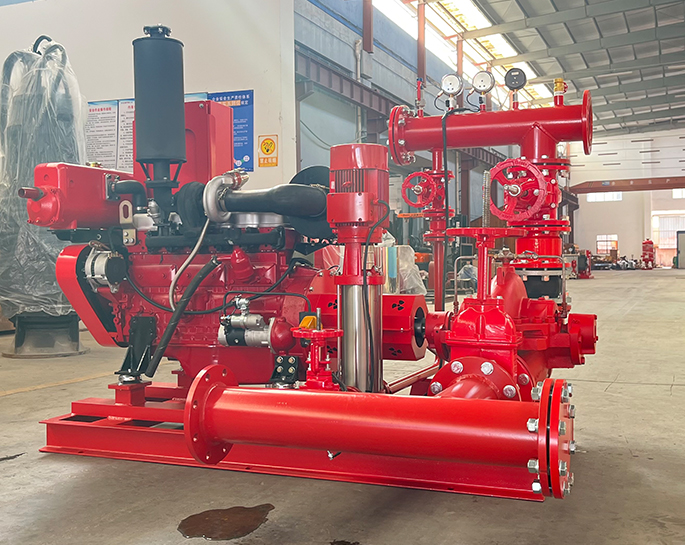Water hammer, also known as hydraulic shock, occurs in a fluid system when there is a sudden change in flow velocity, causing pressure waves that can lead to loud banging noises and potential damage to pipes, valves, and other components. In fire pump systems with high flow rates, water hammer can be a concern. Here are some common methods to mitigate water hammer in fire pump systems:
1. **Check Valves:**
- Install check valves in the system to prevent reverse flow and reduce the risk of water hammer. These valves allow water to flow in one direction only, preventing sudden changes in flow direction that can lead to water hammer.
2. **Slow Opening and Closing of Valves:**
- Use slow-opening and slow-closing valves to reduce the rate of change in flow velocity. Rapid valve closure can generate significant pressure waves, contributing to water hammer.
3. **Pressure Relief Valves:**
- Install pressure relief valves to release excess pressure from the system and prevent the occurrence of water hammer. These valves open when the pressure exceeds a certain threshold, allowing the excess pressure to be safely discharged.
4. **Water Surge Tanks:**
- Incorporate surge tanks into the system to absorb and dampen the effects of water hammer. Surge tanks provide additional volume for the water to expand into when pressure waves occur, reducing the impact on the system.
5. **Air Chambers:**
- Integrate air chambers or water hammer arrestors into the piping system. These chambers contain a cushion of air that compresses when a pressure surge occurs, absorbing the shock and preventing water hammer.
6. **Proper Pipe Sizing:**
- Ensure that the pipes in the system are properly sized to accommodate the high flow rates without causing abrupt changes in velocity. Proper pipe sizing can help minimize the risk of water hammer.
7. **Pressure Reducing Valves:**
- Use pressure reducing valves to control and maintain a steady pressure in the system. These valves can help prevent pressure spikes that contribute to water hammer.
8. **Flow Control Devices:**
- Incorporate flow control devices, such as throttling valves, to manage and control the flow rates in the system gradually. This helps avoid sudden changes in velocity that can lead to water hammer.
9. **System Modeling and Analysis:**
- Conduct a hydraulic analysis of the system using computer modeling to identify potential areas of concern. This analysis can help design and implement mitigation measures more effectively.
It's essential to consult with hydraulic engineers or specialists during the design and installation of fire pump systems to ensure that appropriate measures are taken to mitigate water hammer and protect the integrity of the system components.



